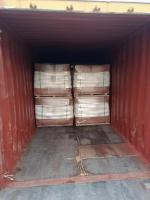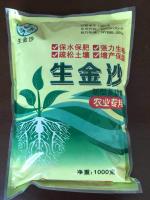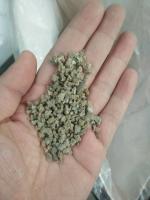Our Products
Product Center / SLURRYBOND 200 equivalent mdoel can be replaced by Chinafloc-SAP

Application of Super Absorbent Polymer (SLURRYBOND 200)
(Approx. 1000 words)
SLURRYBOND 200 is a super absorbent polymer (SAP) formulated specifically for solidifying, stabilizing, and immobilizing water-based drilling fluids, slurries, and waste streams. SAP-based solidification chemicals like SLURRYBOND 200 are designed to quickly absorb free water, increase viscosity, and transform fluid waste into a manageable, non-flowable, and landfill-acceptable solid. This product is widely used in the drilling industry, construction dewatering, environmental remediation, tunneling, mining operations, and municipal waste management. The essential function of SLURRYBOND 200 is to bind water at the molecular level, forming a stable gel matrix that prevents liquid release under normal pressure conditions.
1. Drilling Waste Management (Primary Application)
1.1 Solidification of Water-Based Drilling Fluids
The largest application of SLURRYBOND 200 is in solidifying water-based drilling muds and drill cuttings generated during oil & gas drilling, HDD (Horizontal Directional Drilling), utility boring, and geothermal drilling. During drilling operations, large volumes of mud and cuttings are produced and must be disposed of according to environmental regulations. Landfills generally require waste to be in a non-free-liquid state. SLURRYBOND 200 is added to the waste pit or cuttings containers to absorb free liquid and convert the mixture into a gel-solid.
Key Benefits:
-
Achieves passable paint filter tests required by U.S. EPA for landfill disposal.
-
Reduces fluidity and prevents leakage during transportation.
-
Improves handling safety and prevents spills on work sites.
-
Replaces the need for heavy absorbents such as sawdust, fly ash, or cement.
1.2 Horizontal Directional Drilling (HDD) and Utility Boring
In HDD, the drilling slurry often contains bentonite, polymers, clay, and cuttings. SLURRYBOND 200:
-
Rapidly absorbs water from HDD slurry
-
Reduces disposal cost by decreasing waste volume
-
Allows contractors to transport solidified material safely
-
Works effectively even in high-clay and bentonite-rich slurries
Because HDD jobs occur in urban environments, fast solidification is critically important to prevent spills during transport.
2. Construction Dewatering and Slurry Management
2.1 Solidification of Excavation Slurry
Construction activities such as shaft sinking, tunneling, caisson installation, foundation drilling, and wet soil excavation produce slurries that cannot be transported or disposed of in liquid form. SLURRYBOND 200 is used to:
-
Stabilize watery excavation sludge
-
Convert spoil into a non-free-draining solid
-
Improve handling with loaders and trucks
-
Reduce water content before disposal
Typical industries:
-
Civil engineering contractors
-
Geotechnical firms
-
Foundation drilling companies
-
Tunneling contractors
2.2 Concrete Washout Slurry
Concrete washout water can contain cement particles, lime, sand, and aggregate. It is classified as caustic waste and cannot enter storm drains. SLURRYBOND 200 absorbs the water phase and creates a stable, manageable solid. It is widely used in:
-
Road & bridge construction
-
Ready-mix concrete plants
-
Paving contractors
3. Environmental Remediation
3.1 Spill Response & Emergency Containment
SLURRYBOND 200 is frequently used by environmental cleanup contractors to solidify contaminated water and suspended particles. Examples include:
-
Chemical spill containment
-
Drilling fluid release cleanups
-
Emergency stormwater ponding removal
-
Hazardous sludge stabilization
It prevents contaminated liquids from migrating into soil or waterways.
3.2 Soil Stabilization for Contaminated Sites
On remediation sites where contaminated soils contain excess moisture, SAP such as SLURRYBOND 200:
-
Reduces moisture content
-
Immobilizes contaminants within the gel matrix
-
Facilitates soil removal and transport
Since SAP does not chemically react with contaminants, it is suitable when a non-reactive immobilizing agent is required.
4. Pipeline Construction and Hydrostatic Test Waters
Hydrostatic testing of pipelines generates thousands of gallons of wastewater that often contain fine sediments. SLURRYBOND 200 is used to:
-
Solidify sediment-rich water
-
Stabilize test water for disposal
-
Reduce time spent on dewatering operations
Pipeline constructors often rely on SAP because it works in diverse water qualities, including groundwater, river water, and freshwater sources.
5. Mining and Mineral Processing
Although SAP is not a traditional flocculant for mining, SLURRYBOND 200 is used in downstream operations to:
-
Solidify sediment ponds
-
Stabilize drilling fluids used for blast hole drilling
-
Reduce water content in tailings for transportation
Gold, copper, and aggregate mining operations use SAP during maintenance of sediment control structures.
6. Municipal and Industrial Waste Handling
6.1 Wastewater Treatment Sludge
Municipal wastewater facilities may use SLURRYBOND 200 in emergency or supplemental roles to solidify:
-
Lagoon sludge
-
Clarifier waste
-
Overflow water
-
Biosolids with high moisture
While not a primary dewatering chemical (unlike cationic PAM), SAP is used when the solids are too dilute for mechanical dewatering.
6.2 Industrial Waste Tanks
Industries that generate wet waste—such as food processing, chemical plants, and paper mills—use SLURRYBOND 200 to immobilize:
-
Washwater
-
Polymer-rich tank bottoms
-
Settling basin sludge
-
Process residuals
7. Landfill Compliance & Transportation Safety
Most landfills implement EPA Method 9095B—Paint Filter Liquids Test to determine whether waste can be accepted. SLURRYBOND 200 is designed to ensure:
-
No free liquid drains from the waste
-
Waste meets DOT and landfill requirements
-
Solidified material remains stable during transport
This is critical for drilling contractors who must avoid penalties for improperly prepared waste.
8. Advantages of Using SLURRYBOND 200 Super Absorbent Polymer
-
High absorption capacity – absorbs 300–400 times its weight in water.
-
Fast reaction – solidifies within minutes in most water-based systems.
-
Low dosage – usually 0.2–1% by weight depending on slurry consistency.
-
Stable gel formation – does not release water under normal pressure.
-
Non-hazardous & inert – easy to transport and store.
-
Reduces disposal cost – minimizes waste weight and volume.
-
Eliminates dust and fluid leaks during hauling.
-
Effective across a wide pH range and compatible with bentonite-based muds.





